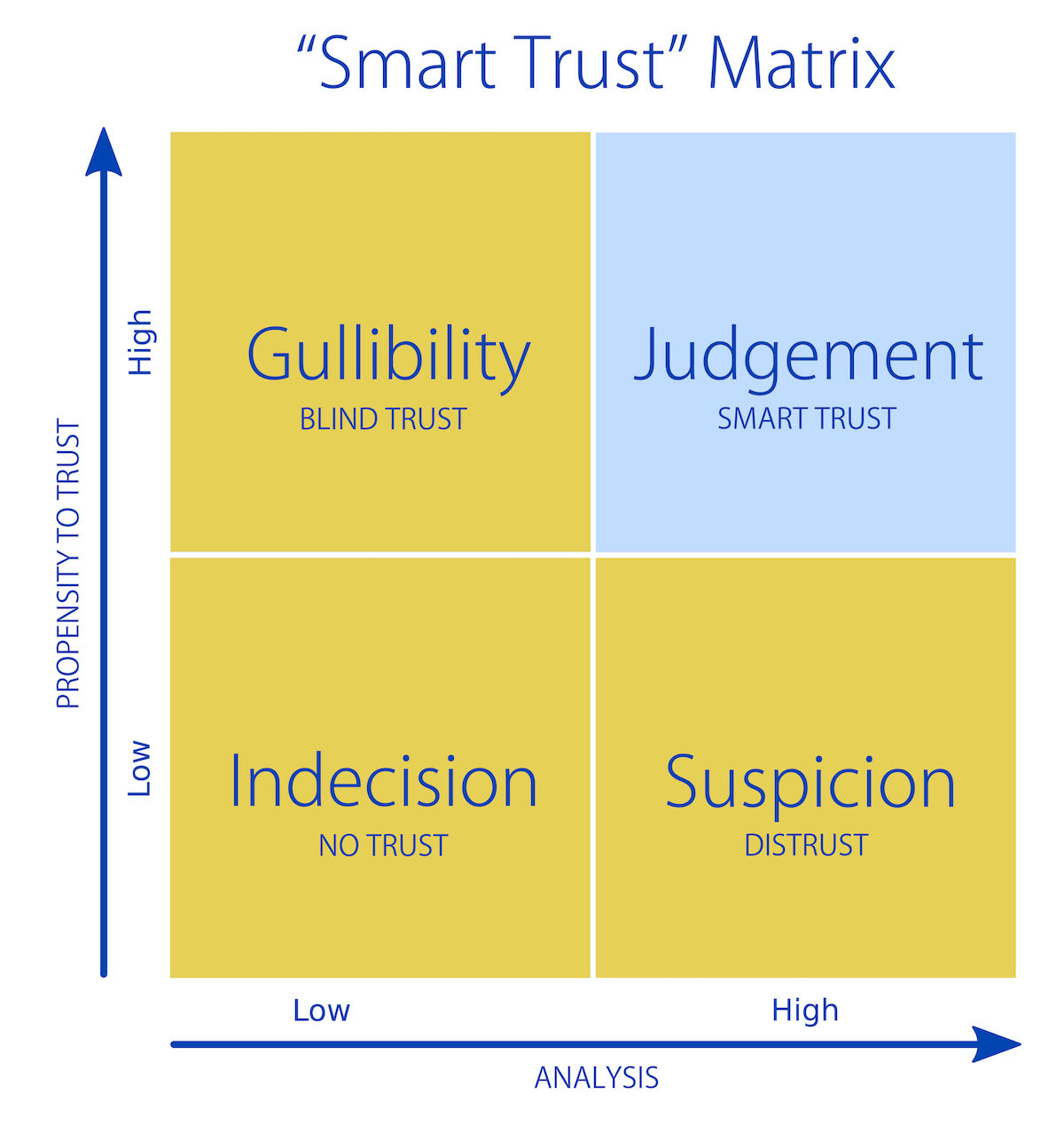“Despite its powerful benefit, trust is the single hardest quality to create in any organization — and it’s fragile.”
John Pepper, CEO of P&G
CEOs, managers, and team leaders all realize the value of trust. They know they can’t achieve big corporate or team goals without the collaborative effort of a team that trusts each other. In the first article of this two-part series, Stephen Covey’s Trust MatrixTM took the bull by its horns, mapping the two constituents of trust — a propensity to trust, and analysis.

Once you know which quadrant your team is in, the next question is: how do you reach and maintain a high level of trust? As executive coach and author, Amy Jen Su points out, trust is not only dependent on the behavior of other people, but also on our own responses and interactions. Acknowledging this is hard work, and it requires you and your team to change old habits and adopt new ones. Let’s look at the habits you need to introduce as a manager to build trust at a personal and one-on-one level as well as a team level.
Getting out of the zone of ‘no trust’: When junior employees are in the quadrant of ‘no trust’, they tend to undermine themselves and clamp down when interacting with their managers. As a manager, you can help your team break this habit by encouraging them to actively voice their opinions, thoughts, and ideas, in meetings and brainstorm sessions. By remembering that every idea is a contribution, juniors can reduce the self-stress of sharing, and build confidence in their own abilities.
Getting out of the zone of ‘blind trust’: Many team members find themselves in the quadrant of ‘blind trust’ when they act purely on good faith and misjudge people or situations that have the potential to let them down. When such incidents accumulate, colleagues making those decisions can appear incompetent. Instead, prepare them to make value calls with the help of training, checklists, and job shadowing, until making analytical decisions become a habit.
Getting out of the zone of ‘distrust’: In our last article, we saw how micromanager Sue often took projects away from team members to complete them herself. If you ask her why, she’ll probably say, “I just can’t trust them.” To break this habit, Sue needs to ask herself why she distrusts her team, and exactly what behavior from each person causes it. She can then help them reflect on their habits. But there’s another critical thing for her to do – consider whether her own behavior contributes to the dynamics. For instance, could she be coming across as dismissive of the possible reasons why projects might have gone haywire or targets not been achieved? By addressing her own problem areas and helping team members become more competent, she can tackle distrust within the team.
Staying in the zone of ‘smart trust’: Smart managers maintain trust within their team by enabling transparent communication, walking the talk, being consistent in their actions, and offering pubic praise and private, constructive criticism. These behaviors aren’t easy to adopt; but by consciously practicing each of them, managers form healthy, productive habits and help to build trust within the team.
Once the quadrant of smart trust becomes your team’s natural environment, regularly evaluate trust levels in the team and find ways to improve it. Remember to set up team bonding activities and one-on-one sessions to keep the trust alive, and training and progress check-ins to improve competence and self-confidence among team members. Above all, set processes to help people stay transparent with each other, and you’ve got the blueprint for a smart trust enabled team.








